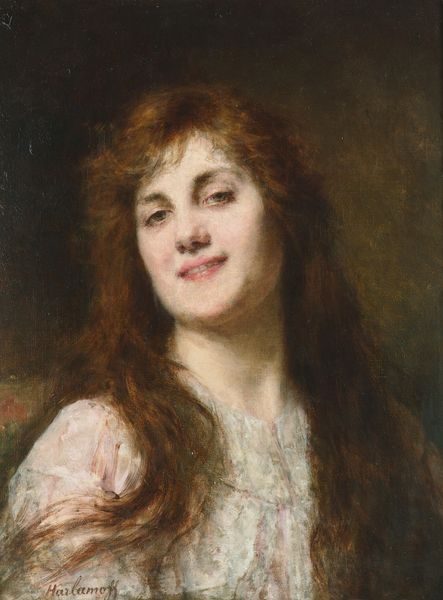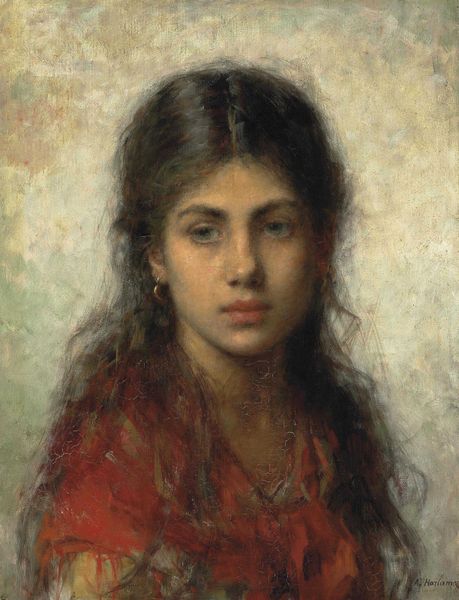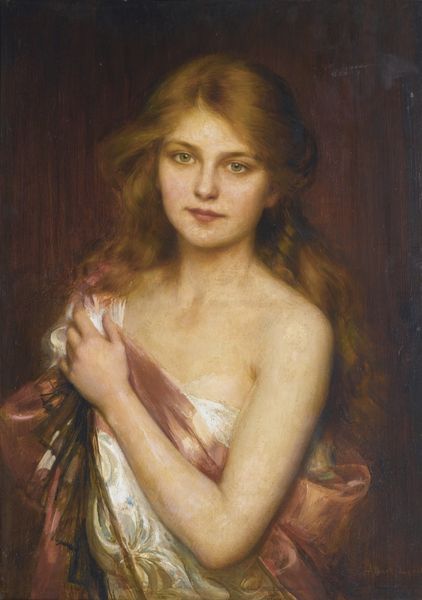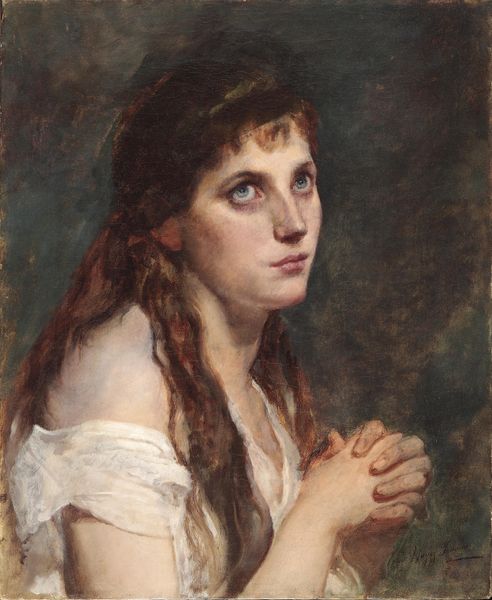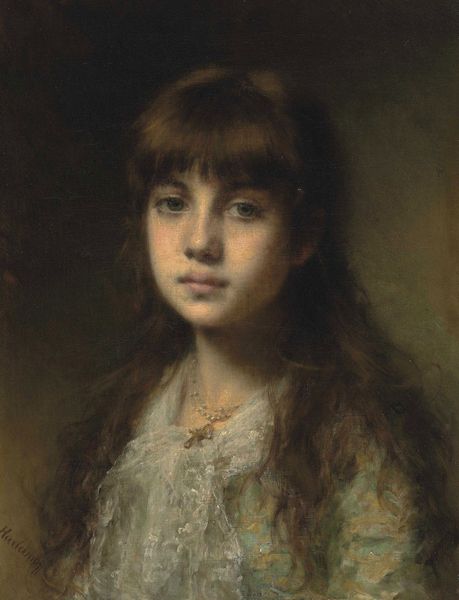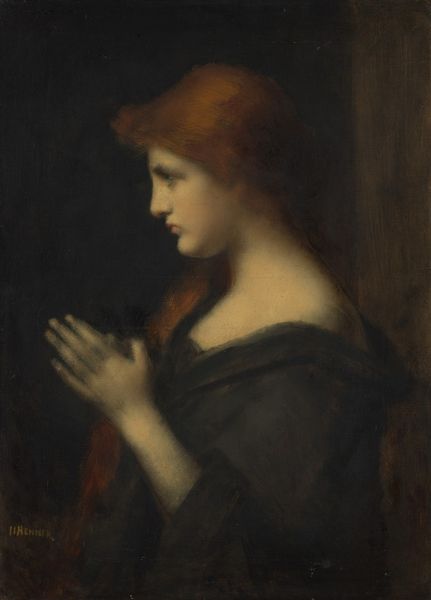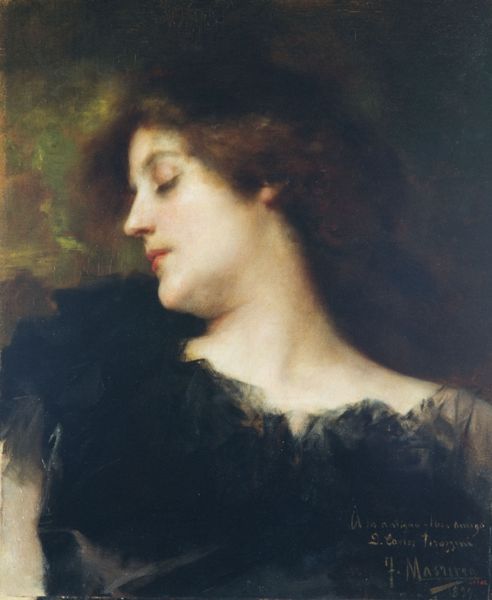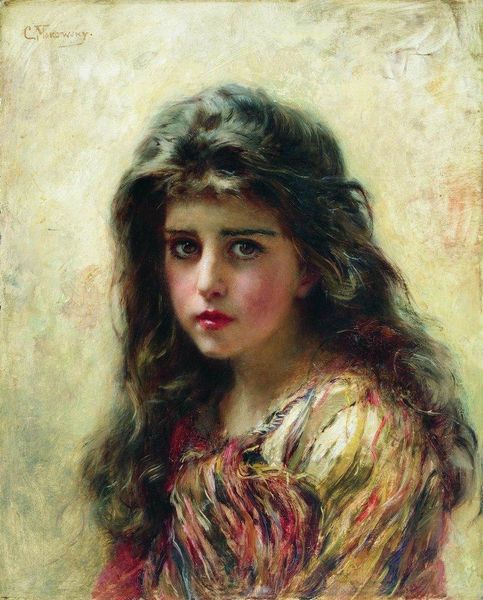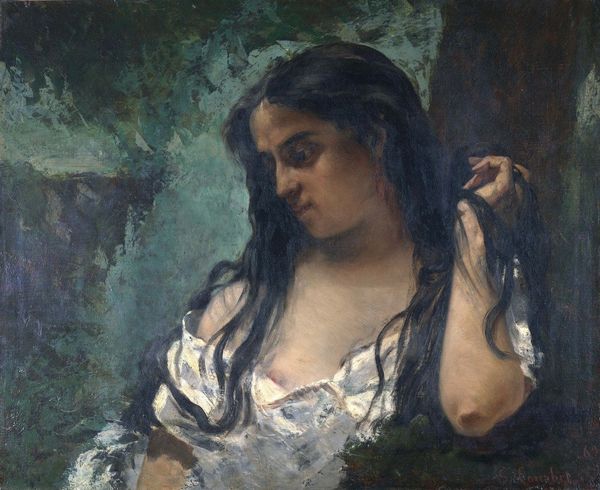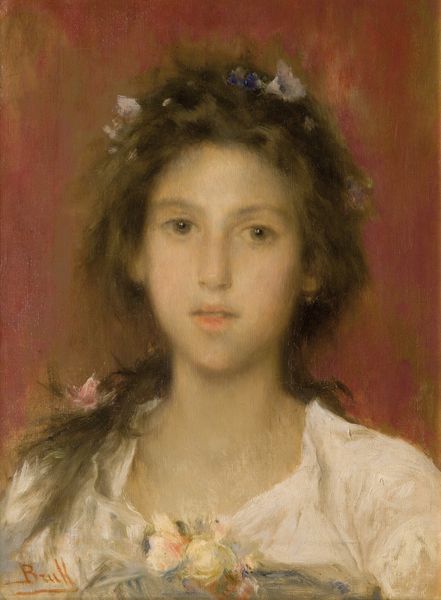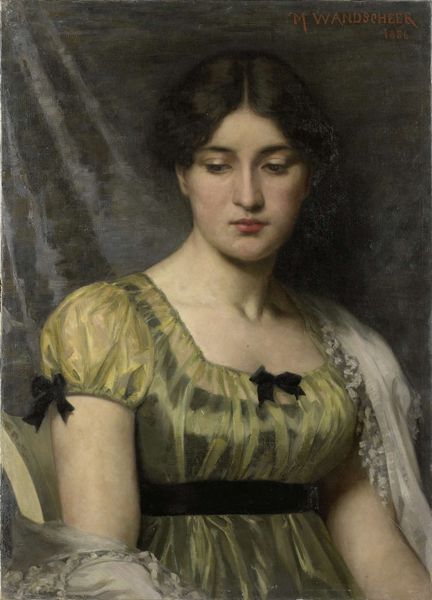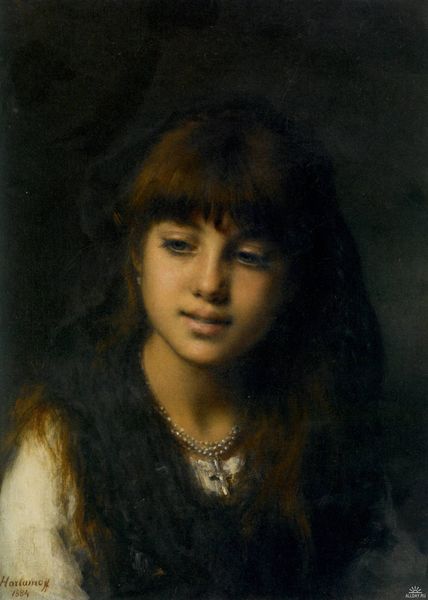
painting, oil-paint
#
portrait
#
character portrait
#
painting
#
oil-paint
#
figuration
#
underpainting
#
romanticism
#
academic-art
#
realism
Copyright: Public domain
Curator: Alexei Harlamoff's "Portrait of a Young Girl" captures something so tender. Her gaze meets ours, and it feels like a shared secret. The canvas glows with warmth; how would you describe your first impression? Editor: My immediate response is melancholic—the muted color palette, the girl’s hesitant gesture of her hands... there's a stillness, a silence that suggests vulnerability. This kind of pose often reflected societal constraints placed on young women, the pressure to embody innocence and passivity. Curator: That's an interesting perspective. It feels very different from my experience of it, which is less about those constraints and more about the raw beauty of that in-between stage of childhood and adulthood. Look at how her face is softly illuminated! She reminds me of those girls I saw growing up during the Renaissance in Florence... Editor: Indeed. I recognize echoes of academic training in Harlamoff's rendering. His technique certainly romanticizes her, which is also reflective of its time. Harlamoff lived during the Russian Empire and many viewed girls and young women of minority ethnic groups to be naturally ‘childlike,’ and hyper-feminine, leading to a voyeuristic interpretation by those in positions of power. But does this gaze extend a sort of protection, or reinforce existing gender imbalances? Curator: You know, I hadn't considered the voyeuristic reading until now! Still, to me, the painting is a stunning example of how to communicate a feeling of delicate introspection through subtle details like the soft draping of her clothing or the subtle way the light hits her hair. Editor: Those formal qualities certainly speak to the artist's mastery. But I wonder, who was this young girl? What was her story? Curator: Ah, the eternal question with portraits, isn't it? That unknown is also where part of the mystery resides for me. I like not knowing. Editor: I’m more driven to examine those potential historical narratives. Considering the prevailing politics, how much control did she, or any young woman of that time, truly have over their own representation? It challenges how we engage with images like this. Curator: You’ve given me so much to think about. Perhaps both readings can co-exist—a meditation on girlhood framed by a set of broader questions about historical representation. Editor: Yes, ultimately, art is about fostering precisely this kind of layered discussion. Thank you.
Comments
No comments
Be the first to comment and join the conversation on the ultimate creative platform.
